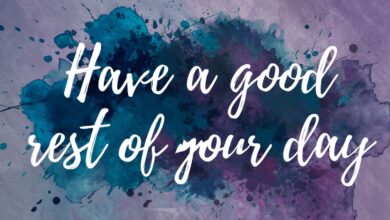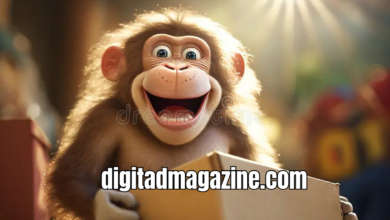Bubble Font Styles: Create Fun and Playful Typography

introduction
Bubble font have become a fun and engaging design choice, seen everywhere from logos to social media graphics, websites, and children’s books. These playful fonts, characterized by their rounded, inflated shapes and informal appearance, have made their mark in modern typography. In this guide, we’ll explore everything you need to know about bubble fonts, including their origins, types, uses, and how to create your own unique designs.
What Is a Bubble Font?
Definition and Characteristics
A bubble font is a type of typography characterized by rounded edges, thick strokes, and inflated, often playful shapes that give the text a “bubbly” appearance. Unlike traditional fonts with sharp, clean lines, bubble fonts aim to evoke a sense of fun and lightheartedness. The rounded and soft curves make these fonts look like they’re inflated, almost as if the letters themselves could float off the page. This distinctive appearance makes them stand out in designs where a lively and engaging feel is desired.
Bubble fonts are typically used in casual, creative, or whimsical designs, making them a popular choice for projects aimed at children or those wanting to convey a sense of fun and youthfulness. The exaggerated curves and shapes of bubble fonts are visually appealing, making them ideal for posters, branding, social media posts, and other designs that require a playful touch.
History and Evolution of Bubble Fonts
The history of bubble fonts can be traced back to the rise of comic books and cartoons in the mid-20th century. These forms of media often used bold, playful lettering to match their lighthearted and exaggerated storytelling. In the 1950s and 1960s, comic strips and animated cartoons introduced bubble-like lettering that would later influence typography in graphic design.
Over the years, bubble fonts continued to evolve. By the 1980s and 1990s, the use of these fonts expanded beyond comics to mainstream media. The digital age saw the rise of online platforms, with web designers embracing bubble fonts for their casual aesthetic. Today, bubble fonts are not just a retro design trend—they are a staple in graphic design, especially for projects targeting younger audiences or casual markets.
Types of Bubble Fonts
Traditional Bubble Fonts
Traditional bubble fonts, such as “Comic Sans” and “BubbleGum,” have a nostalgic charm that harks back to early comic book lettering. These fonts are often straightforward and easy to read, with thick, rounded edges and a sense of boldness. “Comic Sans,” while often criticized for being overused, remains a quintessential example of a bubble-style font. It was originally designed for informal, child-friendly communication, making it ideal for playful, approachable designs.
These traditional bubble fonts are still widely used in various design applications, from party invitations to children’s book covers. They embody a classic playful feel, making them perfect for designs that need to remain lighthearted and easily recognizable.
Modern Bubble Fonts
In recent years, modern bubble fonts have emerged, offering new variations of the traditional bubble font style. These modern fonts tend to push the boundaries of design, incorporating elements such as gradient fills, 3D effects, and vibrant colors. Fonts like “Blobby,” “Bubblies,” and “Airbrush” represent a more dynamic take on bubble lettering. They are often used for more contemporary projects that want to stand out and make a bold statement.
These modern fonts allow designers to add personality and flair to their work, whether through exaggerated letterforms or dynamic shapes. As technology continues to advance, the range of options for creating modern bubble fonts only grows, allowing for even greater customization and creativity.
Custom and Handwritten Bubble Fonts
For those seeking a truly unique design, custom and handwritten bubble fonts offer endless possibilities. These fonts are often hand-drawn, giving them a personal touch that can’t be replicated by standard font libraries. Artists and designers can create their own bubble font styles that perfectly match the vibe of a project.
Handwritten bubble fonts allow for more organic shapes and fluidity, often with slight imperfections that give the font character. Whether used in personal projects, custom logos, or boutique branding, these fonts can elevate a design and make it feel more authentic and original.
How to Use Bubble Fonts in Design Projects
Logo Design
One of the most popular uses for bubble fonts is logo design. Because of their friendly and approachable nature, bubble fonts work well for brands targeting a younger audience, such as children’s toys, entertainment, or playful products. These fonts immediately grab attention and make the brand feel fun and approachable. Designers can use bubble fonts to create logos that are visually engaging, whether for a startup or a well-established company aiming for a fresh look.
When using bubble fonts in logos, it’s essential to consider legibility. While the playful nature of the font is important, it should still be easy to read and scalable for different mediums. Some brands may opt for custom bubble fonts to add a unique twist to their logo design.
Web and Social Media Graphics
Bubble fonts are perfect for use in web and social media design, especially when creating eye-catching graphics. For social media posts, stories, and advertisements, bubble fonts can quickly grab a viewer’s attention. Whether used for headlines, captions, or promotional graphics, these fonts stand out in a crowded digital space. Their playful nature can help a brand or individual convey a fun and engaging message.
Web designers often use bubble fonts for elements such as buttons, headings, or interactive features to make websites feel more dynamic and inviting. However, it’s important to maintain a balance between fun and usability. When used in moderation, bubble fonts can enhance the user experience without overwhelming the design.
Print and Merchandise Design
In print design, bubble fonts are great for posters, flyers, and merchandise like t-shirts and mugs. The bubbly, eye-catching nature of these fonts makes them ideal for creative projects such as event promotions, music festivals, or children’s birthday parties. Their boldness ensures they stand out from other design elements, making them effective for attracting attention.
When used on merchandise, bubble fonts add personality to the product, making it memorable and fun. From custom t-shirts to branded items, bubble fonts help create a unique and engaging look that resonates with a wide audience.
How to Create and Customize Bubble Fonts
Using Online Bubble Font Generators
If you’re looking to create bubble fonts quickly, several online tools allow you to generate them with ease. Websites like CoolText and Font Meme let you input your desired text and instantly convert it into bubble-style fonts. These generators often offer a variety of customization options, including font size, color, and texture, allowing you to create the perfect bubbly text for your project.
These online generators are a great option for beginners or anyone who needs to generate bubble fonts without advanced design skills. While these tools may not provide the full flexibility of professional design software, they are an excellent starting point for casual designs.
How to Create Your Own Bubble Font
For those who want complete control over their bubble fonts, designing your own from scratch is an exciting option. Using graphic design software like Adobe Illustrator or Photoshop, you can create custom bubble letters that fit your project’s specific needs. The key is to focus on creating soft, rounded shapes with thick lines. You can play with gradients, shadows, and 3D effects to give your font more depth and visual interest.
The advantage of designing your own bubble font is that it ensures a one-of-a-kind look that perfectly matches your brand or project. By customizing every curve and stroke, you can create a font that is truly unique and stands out from the crowd.
Conclusion
Bubble fonts are more than just a fun design trend—they have become an essential tool for creating engaging and playful typography. Whether you’re designing a logo, crafting social media graphics, or adding flair to print designs, bubble font offer versatility and personality. From traditional designs to modern and custom fonts, the possibilities are endless when it comes to using bubble fonts in your creative projects.




